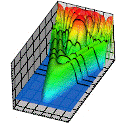Department of Physics and Astronomy: Publications and Other Research
Date of this Version
12-2009
Abstract
Ionization of an atom by a few-cycle attosecond xuv pulse is analyzed using perturbation theory (PT), keeping terms in the transition amplitude up to second order in the pulse electric field. Within the PT approach, we present an ab initio parametrization of the ionized electron angular distribution (AD) using rotational invariance and symmetry arguments. This parametrization gives analytically the dependence of the AD on the carrier envelope phase (CEP), the polarization of the pulse, and on the ionized electron momentum direction, p^ . For the general case of an elliptically polarized pulse, we show that interference of the first- and second-order transition amplitudes causes a CEP-dependent asymmetry (with respect to p^ → −p^) and both elliptic and circular dichroism effects. All of these effects are maximal in the polarization plane and depend not only on the CEP but also on the phase of dynamical atomic parameters that enter our parametrization of the AD. Within the single active electron model of an atom, for an initial s or p state we define all dynamical parameters in terms of radial matrix elements (analytic expressions for which are given for the Coulomb and zero-range potentials). For ionization of the H atom by linearly polarized pulses, our PT results are in excellent agreement with results of numerical solutions of the time-dependent Schrödinger equation of Peng et al. [New J. Phys. 10, 025030 (2008)]. Also, our numerical results show that the asymmetries and dichroism effects at low electron energies have a different physical origin from those at high electron energies. Moreover, our results for Gaussian and cosine-squared pulse shapes are in good qualitative agreement. Finally, we show that our analytic formulas may prove useful for determining few-cycle extreme ultraviolet (xuv) pulse characteristics, such as the CEP and the polarization.


Comments
Published in PHYSICAL REVIEW A 80, 063403 (2009); DOI: 10.1103/PhysRevA.80.063403 Copyright © 2009 The American Physical Society. Used by permission.